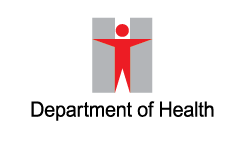Food Poisoning
Causative agents and clinical features
Food poisoning is usually caused by the consumption of contaminated food or water containing bacteria, viruses, parasites, biotoxins or chemicals.
Some of the common causative agents of food poisoning include:
Salmonella (Bacteria)
Places where such agents are commonly found: Widely distributed in domestic and wild animals. They are prevalent in food animals such as poultry, pigs and cattle; and in pets, including cats, dogs, birds, and reptiles such as turtles.
Usual source of food poisoning by such agents: Inadequately cooked meat, meat products, poultry, unpasteurised milk, raw egg and egg products (e.g. puddings).
Clinical features: Common symptoms include vomiting, diarrhoea and abdominal pain, with or without fever. Serious complications, such as dehydration and septicaemia leading to death may occur when appropriate treatment is delayed, but these are rare.
Staphylococcus aureus (Bacteria)
Places where such agents are commonly found: Throat, nasal cavity, skin, cuts and wounds.
Usual source of food poisoning by such agents: Any food contaminated by food handlers with skin infection or nasal carriers, especially those food involving manual handling and no reheating afterwards (e.g. sandwiches, cakes and pastries). Other sources of food contamination include the equipment and surfaces on which food is prepared. The bacterium has the ability to produce enterotoxins that are responsible for food poisoning.
Clinical features: Common symptoms include vomiting, diarrhoea and abdominal pain, with or without fever. Serious complications, such as dehydration and septicaemia leading to death may occur when appropriate treatment is delayed, but these are rare.
Vibrio parahaemolyticus (Bacteria)
Places where such agents are commonly found: Marine products.
Usual source of food poisoning by such agents: Consumption of inadequately cooked or raw marine products. Cooked food may also be cross-contaminated by raw seafood during preparation or storage. Clinical features: Common symptoms include vomiting, diarrhoea and abdominal pain, with or without fever. Serious complications, such as dehydration and septicaemia leading to death may occur when appropriate treatment is delayed, but these are rare.
Clostridium perfringens (Bacteria)
Places where such agents are commonly found: Soil, sewage, dust, faeces of animals and humans and animal-origin feedstuffs.
Usual source of food poisoning by such agents: Meat and meat products that are cross-contaminated, inadequately cooked or being kept under inappropriate temperature for prolonged period of time (e.g. stewed dishes and gravy).
Clinical features: Common symptoms include vomiting, diarrhoea and abdominal pain, with or without fever. Serious complications, such as dehydration and septicaemia leading to death may occur when appropriate treatment is delayed, but these are rare.
Norovirus (Virus)
Places where such agents are commonly found: People can get norovirus infection from having direct contact with an infected person, consuming contaminated food or water, or by touching contaminated surfaces. Usual source of food poisoning by such agents: Shellfish especially raw oysters, raw vegetable, salad and ice have been implicated as common sources of foodborne norovirus infection.
Clinical features: Common symptoms include nausea, vomiting, diarrhoea, abdominal pain, low-grade fever and malaise.
Ciguatera fish poisoning (Biotoxin)
Places where such agents are commonly found: Marine coral reef fish.
Usual source of food poisoning by such agents: Marine coral reef fish.
Clinical features: Numbness in limbs, face, tongue or around the mouth, cold objects perceived as hot and vice versa, dizziness, palpitation and chest pain. For patients who have recovered from ciguatera fish poisoning, subsequent consumption of any fish, nuts, alcohol or caffeine may cause a relapse in symptoms.
Tetrodotoxin poisoning (Biotoxin)
Usual source of food poisoning by such agents: Puffer fish and porcupine fish.
Clinical features: Numbness in lips, tongue, face and limbs, headache, vomiting, diarrhoea, epigastric pain, slurring of speech, difficulty in walking, paralysis, convulsions, breathing difficulty and cardiac arrhythmia. In severe cases, respiratory failure and cardiovascular collapse may occur and result in death.
Pesticide (Chemical)
Usual source of food poisoning by such agents: Vegetables containing dangerous level of pesticide residues.
Clinical features: Dizziness, muscle weakness, numbness, tearing, salivation and palpitation. Severe poisoning may lead to blurred vision, tremor or fits and breathing difficulty.
Mode of transmission
Food poisoning is caused by the consumption of food containing or contaminated by the causative agent.
Incubation period
Incubation period varied from hours to days according to the causative agent.
Management
Seek prompt medical advice if you have symptoms of food poisoning. Fluid replacement is usually required. Sick food handlers should stay away from work until recovery.
Prevention
Food poisoning can be prevented by practising food safety. The “5 Keys to Food Safety” are five simple and effective keys for people to follow when handling food to prevent foodborne diseases:
- Choose (Choose safe raw materials);
- Clean (Keep hands and utensils clean);
- Separate (Separate raw and cooked food);
- Cook (Cook thoroughly); and
- Safe Temperature (Keep food at safe temperature).
Please refer to the Centre for Food Safety website via the link below for more practical tips: http://www.cfs.gov.hk/english/consumer_zone/consumer_zone_5_Keys_to_Food_Safety.html
Member of the public are also reminded to maintain personal, food and environmental hygiene at all times. When dining out, one should:
- Avoid eating raw seafood;
- Be a discerning consumer in choosing cold dishes, including sashimi, sushi and raw oysters at a buffet;
- Choose pasteurised eggs, egg products or dried egg powder for dishes that often use lightly cooked or uncooked eggs;
- Patronise only reliable and licensed restaurants;
- Store and reheat precooked or leftover foods properly before consumption;
- Ensure food is thoroughly cooked before eating during a hotpot or barbecue meal;
- Handle raw and cooked foods carefully and separate them completely during the cooking process;
- Use two sets of chopsticks and utensils to handle raw and cooked foods;
- Avoid patronising illegal food hawkers;
- Drink boiled water;
- Susceptible populations, including those with weakened immunity, the elderly, pregnant women and young children are at a higher risk of foodborne diseases, so they should not consume raw or undercooked foods;
- Refrain from trying to use salt, vinegar, wine or wasabi to kill bacteria as they are not effective; and
- Always wash hands before eating and after going to the toilet.
There are no cases of pesticide food poisoning reported in recent years and the unsatisfactory rate for pesticide residues in vegetables and fruits is low, and the levels of pesticide residues detected were so low that they were not likely to cause poisoning. The recommendations on cleaning vegetables and fruits are updated as below:
- Wash vegetables thoroughly under clean running water;
- When appropriate, scrub produces with hard surfaces with a clean produce brush to remove dirt and substances including pesticides and contaminants from the surface and the fissures; and
- Use of soaps, special detergents or produce washes is not recommended.
Please refer to the Centre for Food Safety website via the link below for more information on pesticide residues in food: http://www.cfs.gov.hk/english/faq/faq_07.html
In preventing ciguatera fish poisoning, the following points should be noted:
- Avoid eating big coral reef fish, especially marine fish over three catties; the bigger the fish, the higher the risk of ciguatera poisoning;
- Eat only a small quantity of coral reef fish at any one time. Do not consume together with alcohol, peanuts or beans, as symptoms of ciguatera poisoning will be exacerbated; and
- Do not eat the roe, liver, guts, head and skin of coral reef fish because the toxin tends to accumulate there.
















